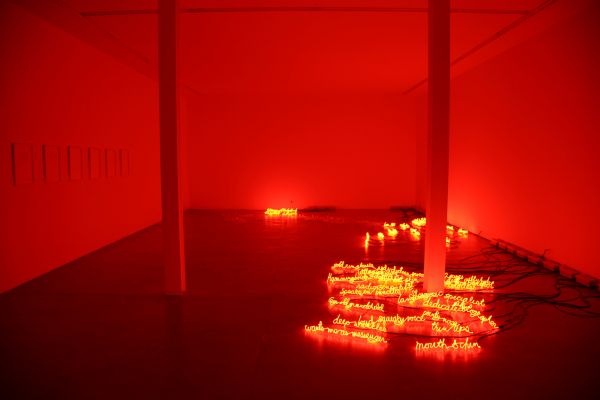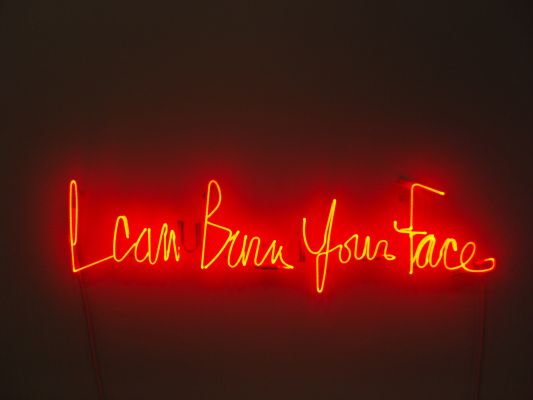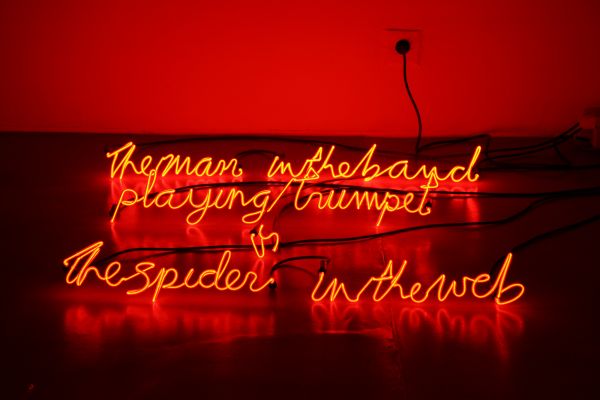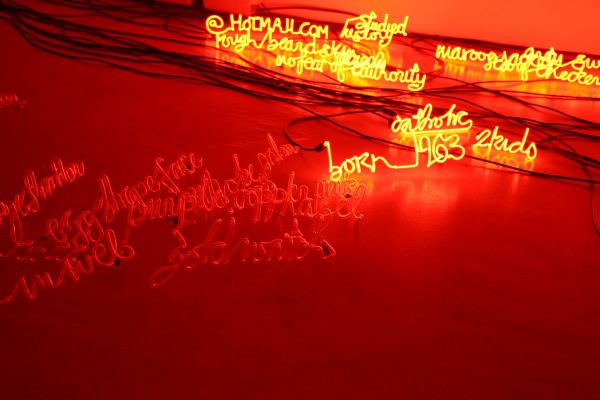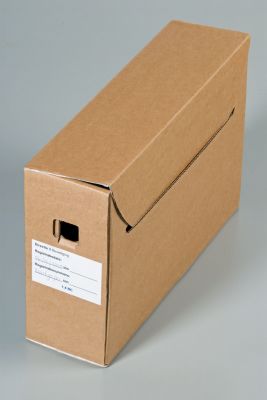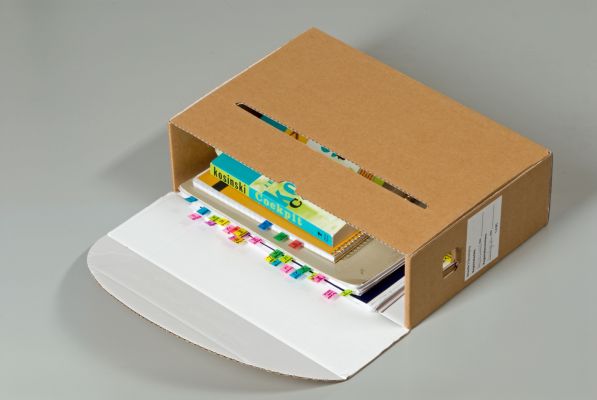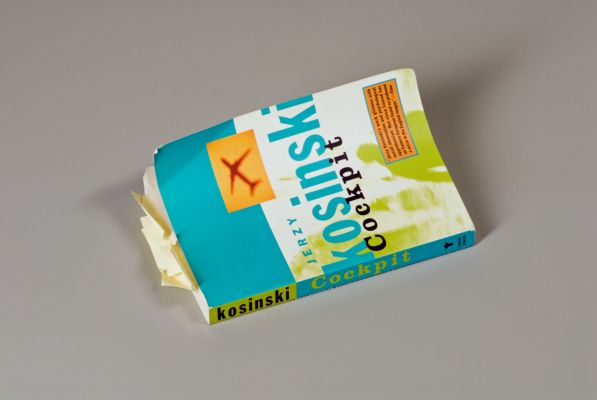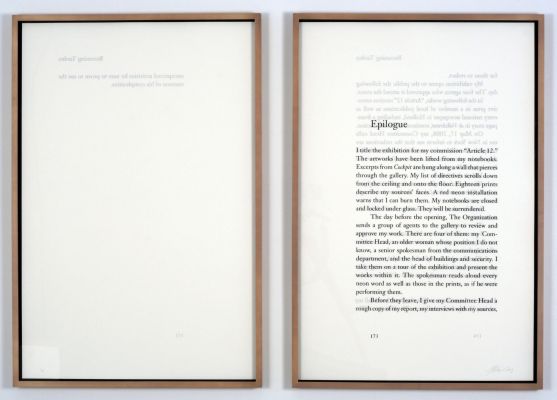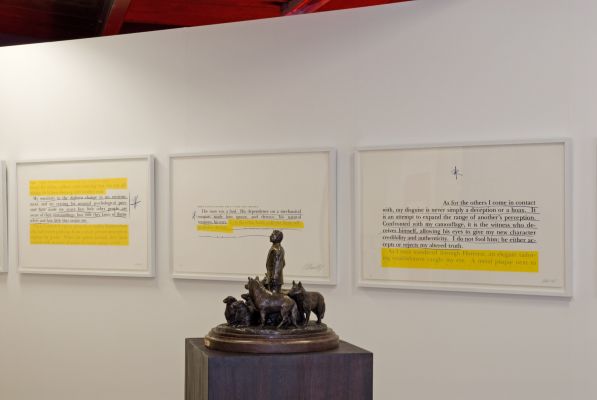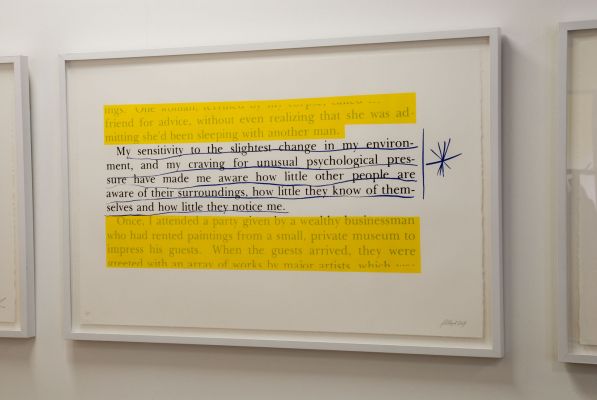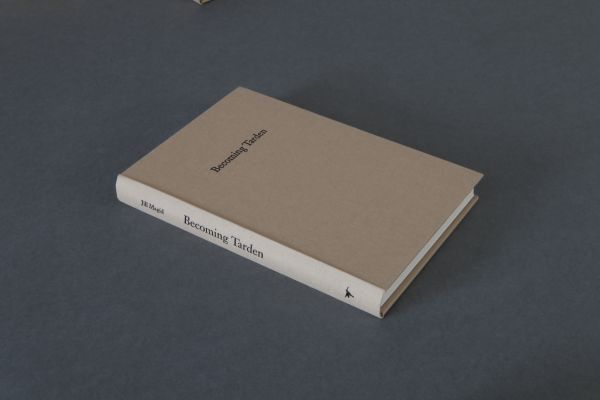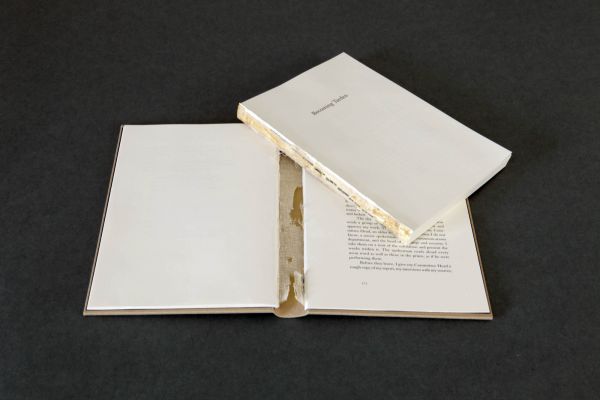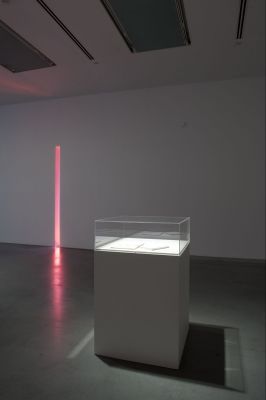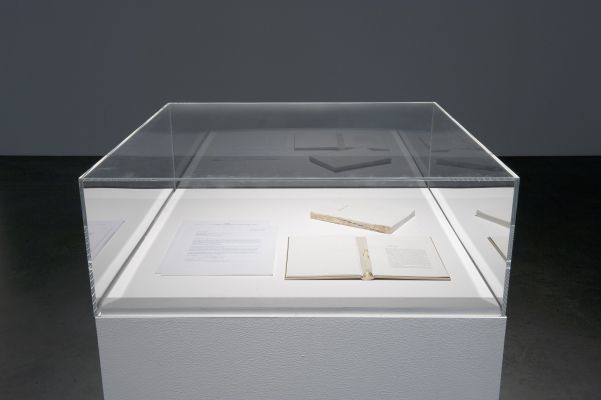The Spy Project
In 2005, I was commissioned by the Dutch secret service (AIVD) to make a work for its new headquarters, as per the law’s stipulation that “a portion of the budget for the new building be spent on an art commission.” The organization solicited me to help improve its public persona by providing “‘the AIVD with a human face.’”
For the next three years I met with eighteen willing employees in non-descript public places, from restaurants and bars to airport meeting points. As the AIVD restricted me from using recording equipment, I collected my contacts’ personal data in handwritten notes, which informed my later series of neons, sculptures and works on paper. I drafted a report of my meetings, amassing the details of individual contacts into a collective persona that I referred to as “The Organization.”
My first exhibition, Article 12, which marked the commission’s end, opened at Stroom in The Hague, 2008. The work never entirely disclosed the identities of my contacts, but nonetheless inverted “the surveillance duties of the agency” by publicly displaying materials associated with its employees. Although reviewed by the agency successfully before the opening, works from the exhibition were later confiscated, and the rough draft of my report was returned to me, highly redacted.
I protested the censorship, prompting AIVD to suggest that I “‘present the manuscript as a visual work of art in a one-time-only exhibition, after which it would become the property of the Dutch government and not be published.’’ My 2009/10 exhibition Authority To Remove at Tate Modern marked the fulfillment of this request: the uncensored report sat securely behind glass. In its penultimate state, the project expressed what it means to have a secret but not the autonomy to share it.
AIVD entered Tate Modern in 2010 and permanently confiscated the uncensored manuscript. A paperback of the redacted version, Becoming Tarden, was published in 2010 on the occasion of the exhibition Free at The New Museum.
